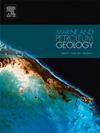Hydrological isolation of the Paratethys in the late Middle-Late Miocene: Integrated stratigraphy, palaeoenvironments and biotic record of the Caspian Basin, Karagiye, Kazakhstan
IF 3.7
2区 地球科学
Q1 GEOSCIENCES, MULTIDISCIPLINARY
引用次数: 0
Abstract
The hydrological connectivity of semi-isolated basins with the global ocean drives remarkable ecosystem turnover and regional climate shifts, making palaeoenvironmental and palaeohydrological studies of the epicontinental basins of high relevance. During the late Middle–Late Miocene, the Paratethys Sea, which occupied vast areas of the West Eurasian Interior, underwent a notable hydrological isolation from the global ocean. Between 12.65 and 7.65 Ma, the Paratethys experienced significant water level fluctuations and eventually near-total ecosystem collapse. The causes and timing of these hydrological and biotic changes remain unclear, especially in the understudied Caspian Sea region. Our study presents an integrated stratigraphic framework of the 136-m-thick Karagiye section on the east coast of the Caspian Sea (Mangystau region, Kazakhstan). The fauna-rich deposits document the pre- (Konkian), syn- (Volhynian, Bessarabian and Khersonian) and post-isolation (Maeotian) phases of Paratethys evolution at its eastern margin. We reconstruct the palaeoenvironmental history of the Caspian Basin by combining palaeomagnetic dating with biostratigraphic analyses of microfauna, molluscs, marine vertebrates and calcareous nannoplankton. Our key findings in the studied section include: 1. Konkian (incomplete): Open lagoonal environments with restricted connectivity to the global ocean in the early Konkian followed by a middle Konkian faunal influx and establishment of normal marine environments; 2. Volhynian (incomplete, 12.3–12.05 Ma): Onset of Paratethys hydrological isolation with marginal lagoonal environments, new endemic species, plus rare surviving Konkian taxa; 3. Bessarabian (12.05–9.9 Ma): Transgression and offshore setting at ∼12.05 Ma with maximum flooding at 11.6 Ma and Intra-Bessarabian Carbonate Surge at ∼10.7 Ma, followed by upper Bessarabian (10.7–9.9 Ma) carbonate platform interior settings; 4. Khersonian (9.9–7.65 Ma): Khersonian Ecological Crisis, carbonate platform to backshore environments with hiatus between 9.5 and ∼8.0 Ma representing an extreme lowstand. 5. Maeotian (incomplete 7.65–7.0 Ma): Transgression at 7.65 Ma, followed by a delayed invasion of Maeotian faunas at 7.5 Ma, linked to the reconnection of the Caspian Basin with the rest of the Eastern Paratethys. The well-dated biotic record of Karagiye enhances understanding of Paratethyan hydrological and ecological events in the Caspian Basin and provides a foundation for further palaeoclimatic and palaeobiogeographic studies across Eurasia.
求助全文
约1分钟内获得全文
求助全文
来源期刊

Marine and Petroleum Geology
地学-地球科学综合
CiteScore
8.80
自引率
14.30%
发文量
475
审稿时长
63 days
期刊介绍:
Marine and Petroleum Geology is the pre-eminent international forum for the exchange of multidisciplinary concepts, interpretations and techniques for all concerned with marine and petroleum geology in industry, government and academia. Rapid bimonthly publication allows early communications of papers or short communications to the geoscience community.
Marine and Petroleum Geology is essential reading for geologists, geophysicists and explorationists in industry, government and academia working in the following areas: marine geology; basin analysis and evaluation; organic geochemistry; reserve/resource estimation; seismic stratigraphy; thermal models of basic evolution; sedimentary geology; continental margins; geophysical interpretation; structural geology/tectonics; formation evaluation techniques; well logging.
 求助内容:
求助内容: 应助结果提醒方式:
应助结果提醒方式:


